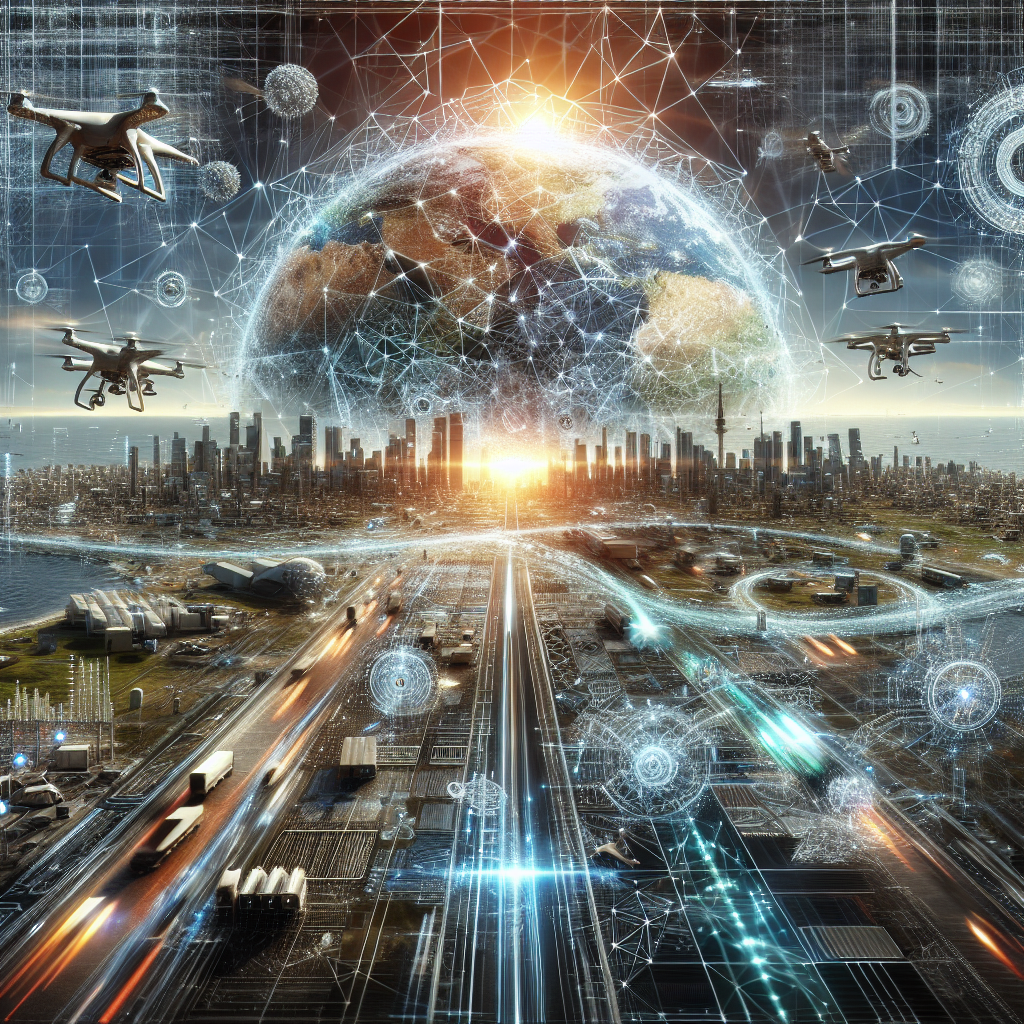Artificial General Intelligence (AGI) is a term used to describe a type of artificial intelligence that possesses the ability to understand, learn, and apply knowledge across a wide range of tasks, much like a human being. AGI is seen as the next frontier in AI development, as it has the potential to revolutionize industries and change the way we live and work.
The Fourth Industrial Revolution is characterized by the fusion of technologies that blur the lines between physical, digital, and biological realms. AGI is at the forefront of this revolution, as it has the capacity to drive innovation, create new industries, and disrupt existing ones. In this article, we will explore how AGI is shaping the Fourth Industrial Revolution and the impact it is having on society as a whole.
AGI and Industry 4.0
Industry 4.0 is a term used to describe the ongoing automation and digitization of manufacturing and industry processes. AGI is playing a crucial role in this transformation, as it has the potential to revolutionize the way factories operate, optimize supply chains, and enhance productivity. By leveraging AGI, companies can create smart factories that are capable of self-optimizing and self-adapting to changing market conditions.
AGI is also being used to develop new products and services that were previously thought to be impossible. For example, AGI-powered robots are being used in healthcare to assist with surgeries, in agriculture to optimize crop yields, and in transportation to improve safety and efficiency. AGI is also being used in finance to analyze market trends and make investment decisions, in retail to personalize customer experiences, and in education to personalize learning experiences.
AGI and the Labor Market
One of the biggest concerns surrounding AGI is its potential impact on the labor market. As AGI becomes more advanced, there is a fear that it will replace human workers and lead to mass unemployment. While it is true that some jobs may be automated by AGI, there are also opportunities for new jobs to be created in industries that were previously non-existent.
For example, as AGI becomes more prevalent in healthcare, there will be a need for professionals who can work alongside AGI-powered robots to provide care to patients. In agriculture, there will be a need for workers who can manage and maintain AGI-powered machinery. In finance, there will be a need for analysts who can interpret the data generated by AGI algorithms.
AGI and Ethics
Another major concern surrounding AGI is the ethical implications of its development and use. As AGI becomes more advanced, there is a fear that it may surpass human intelligence and autonomy, leading to a potential loss of control over AI systems. There is also a fear that AGI may be used for malicious purposes, such as surveillance, manipulation, and warfare.
To address these concerns, researchers and policymakers are working to develop ethical guidelines and regulations for the development and use of AGI. These guidelines aim to ensure that AGI is developed in a safe and responsible manner, with a focus on transparency, accountability, and human oversight. By establishing clear ethical standards for AGI, we can ensure that it is used for the benefit of society as a whole.
FAQs
Q: What is the difference between AGI and narrow AI?
A: AGI refers to artificial intelligence that possesses the ability to understand, learn, and apply knowledge across a wide range of tasks, much like a human being. Narrow AI, on the other hand, refers to artificial intelligence that is designed to perform specific tasks or functions, such as speech recognition or image classification.
Q: How close are we to achieving AGI?
A: While significant progress has been made in the field of AI, we are still far from achieving true AGI. Researchers are working to develop AI systems that are capable of reasoning, problem-solving, and learning in a general sense, but there are still many challenges to overcome before we can achieve AGI.
Q: What are some of the potential benefits of AGI?
A: AGI has the potential to revolutionize industries, drive innovation, and improve productivity. By leveraging AGI, companies can create smart factories, develop new products and services, and optimize business processes. AGI also has the potential to improve healthcare, transportation, finance, and education.
Q: What are some of the potential risks of AGI?
A: Some of the potential risks of AGI include job displacement, ethical concerns, and loss of control over AI systems. As AGI becomes more advanced, there is a fear that it may replace human workers and lead to mass unemployment. There is also a fear that AGI may be used for malicious purposes, such as surveillance, manipulation, and warfare.
In conclusion, AGI is shaping the Fourth Industrial Revolution by driving innovation, creating new industries, and disrupting existing ones. While there are concerns surrounding its impact on the labor market and ethics, there are also opportunities for AGI to benefit society as a whole. By developing ethical guidelines and regulations for the development and use of AGI, we can ensure that it is used for the benefit of humanity.

